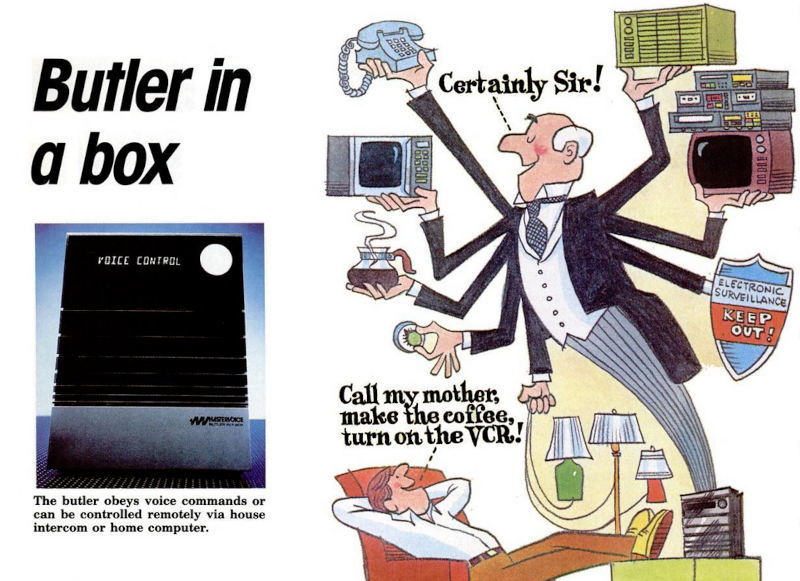Retrogadgets: Butler in a Box [Hackaday]

You walk into your house and issue a voice command to bring up the lights and start a cup of coffee. No big deal, right? Siri, Google, and Alexa can do all that. Did we mention it is 1985? And, apparently, you were one of the people who put out about $1,500 for a Mastervoice “Butler in a Box,” the subject of a Popular Science video you can see below.
If you think the box is interesting, the inventor’s story is even stranger. [Kevin] got a mint-condition Butler in a Box from eBay. How did it work, given in 1983, there was no AI voice recognition and public Internet? We did note that the “appliance module” was a standard X10 interface.
Of course, X10 automation was common enough in those days. But the voice command feature was certainly wrong. You did have to use a cassette tape to train the box to your voice. The whole setup was pretty intense and took about 25 minutes just for a simple single device.
In addition to the interesting technology, the story of [Gus Searcy] and his path to bringing this device to market is also interesting, if not a little strange. As you might expect, voice recognition in the 1980s was tough, even for big computers. So, how did Butler in a Box work? First, every user — you could have up to 4 — had to train their own butler name (like a wake word) and all the commands. It could only understand limited commands.
[Kevin] mentioned that if the power went out for a few hours, you would have to reprogram the butler again. However, [Gus] left a comment on the video that there was an optional pack that would backup your butler — no idea what that cost, though. We were afraid he wasn’t going to show us the device actually operating, but if you stick it out to the end, you will receive your reward.
We really wanted to see inside, but [Kevin] let someone else repair the box, so we didn’t get a peek at his. However, we found a post on the Vintage Computer Federation forums that satisfied our thirst for a teardown. Apparently, there is a potted module inside that has a PIN number that, if lost, renders the unit inoperable so people who are interested in these are trying to find ways to break the PIN code out. There’s a surprising amount of hardware inside, including an Intel 8748 and a Rockwell 6501. There’s another good teardown in another post of a later version, the Mastervoice ECU. Apparently, the company stuck around until around past the year 2000. The Wayback Machine is our friend. Note that price list!
The Smithsonian also has a picture of a board from one sans security module. In 2008, the company’s site claimed they had delivered 26,000 systems, so maybe one of those wound up in the museum. Home automation has come a long way. Don’t forget, there’s still time to enter our home automation contest.

![retrogadgets:-butler-in-a-box-[hackaday]](https://i0.wp.com/upmytech.com/wp-content/uploads/2024/03/175917-retrogadgets-butler-in-a-box-hackaday.png?resize=800%2C445&ssl=1)